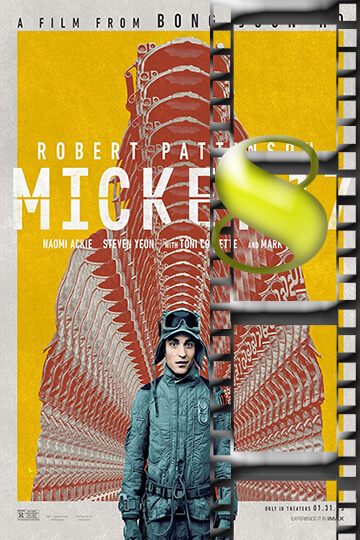



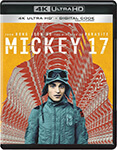
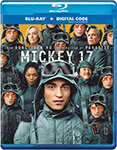
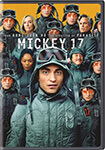
What’s It About
A disposable employee is sent on a human expedition to colonize the ice world Niflheim. After one iteration dies, a new body is regenerated with most of his memories intact.

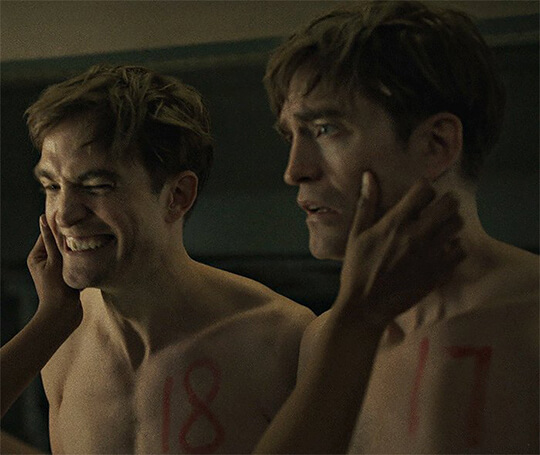
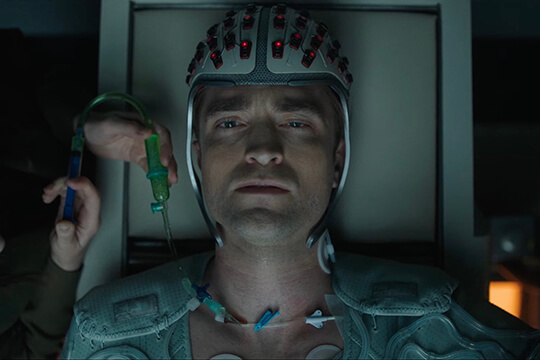
MOVIESinMO REVIEW
In 2054, Mickey joins a space mission to a distant planet. He signs up to escape a dangerous loan shark but doesn’t read the fine print. Turns out, he’s volunteered to be an “expendable” crew member – someone meant to die and be replaced whenever needed. When Mickey dies (which happens often), the ship’s system prints a new version of him with all his memories intact. This clever setup shows how workers are treated as throwaway parts in a machine – Mickey is literally disposable. His employers find it cheaper to replace him than to keep him healthy. The mission is led by Kenneth, a failed politician turned billionaire with a big ego and bigger plans. His wife, Ylfa, is just as power-hungry. The contrast between their luxury quarters and the workers’ dirty, patched-up living spaces shows the huge gap between the haves and have-nots. Mickey befriends Timo and falls for security officer Nasha during their four-year journey. When they reach the icy planet, Mickey (version 17) encounters strange armadillo-like creatures called “creepers.” Everyone expects him to die, but surprisingly, the creatures return him safely to the ship. This creates a major problem when the system, assuming Mickey died, prints version 18. Now, two Mickeys exist at once – which breaks all the rules about “multiples.” The two Mickeys have distinct personalities: 17 is naive with a hesitant voice and hunched posture, while 18 is colder and more calculating. Both Mickeys fall for Nasha, who sees something special in them that others miss. She becomes the moral compass of the story, showing compassion when others don’t. Kenneth, paranoid and power-hungry, wants to kill all the creepers on the planet. Meanwhile, Ylfa schemes to use the creatures for her own gain. But science officer Dorothy discovers something surprising – the creepers are highly intelligent and have their own language, which she manages to decode. This all builds to a major confrontation that forces everyone to choose sides. “Mickey 17” raises interesting questions about what makes someone human. Even though both Mickeys come from the same pattern, they develop into distinct individuals with their own thoughts and choices. Kenneth and Ylfa represent the worst of humanity. Kenneth, with his fake smile and capped teeth, talks about creating a “pure race” on the new planet – echoing Nazi ideas. He and Ylfa use religion, fear, and capitalism to control others. They’re shown as almost cartoonishly evil, with Ylfa’s rage and pointy fingernails making her seem like a villain from a fairy tale. The film tackles several big themes: the ethics of cloning humans, the exploitation of workers, colonization (with humans treating the native creatures as threats just because they look different), environmental destruction, and animal abuse. The creepers make sounds that subtly include dog barks and whines, making viewers feel sympathy for them. The spaceship itself tells part of the story through its design. Workers eat gray slop on metal trays while Kenneth and Ylfa dine with china and crystal. These class differences mirror problems in today’s society. The movie includes some humor, though not all jokes land. One funny scene shows the cloning machine having “paper jams,” just like a regular printer. Sometimes, the narration feels excessive, telling things that could have been shown visually instead. By the end, Mickey evolves from a dim-witted person just trying to survive into someone with more awareness and purpose. The story suggests that what matters isn’t what we can get from the world but what we can give to it. When thousands of creepers surround the ship, it shows how foolish Kenneth’s order to kill them all really is. The creatures fill the screen, making it clear that the humans are outnumbered. In part, this moment is a commentary on the hubris of those who think you can just conquer a planet and not suffer the consequences. At its core, the tale asks us to consider matters of identity, mortality, and the soul. Each Mickey awakens to the realization that he actually possesses some agency and significance even though he was created to be a disposable worker. It’s a clever consideration of what defines us as human despite the fact that we are treated as anything but.
OUR RATING – A REALITY MOCKING 8
MEDIA
- Genre – Science Fiction
- Street date
- Digital – April 1, 2025
- 4K/Blu-Ray/DVD – May 13, 2025
- Video – 1080p
- Screen size 1.85:1
- Sound – English: Dolby Atmos, English: Dolby TrueHD 7.1, French: Dolby Digital 5.1, Spanish: Dolby Digital 5.1, Audio descriptive
- Subtitles – English SDH, French, Spanish, Danish, Finnish, Norwegian, Swedish
Extras
- Behind the Lens: Bong Joon Ho’s Mickey 17:
- This featurette explores the director’s vision and production process for the film.
- Mickey 17: A World Reimagined:
- This segment provides an overview of the film’s conceptual setting and narrative design.
- The Faces of Niflheim:
- This section focuses on character design and visual effects, specifically within the world of Niflheim.
- Trailers (2 clips, 4:44 total):
- The 4K Ultra HD Blu-ray includes two separate trailers for the film

